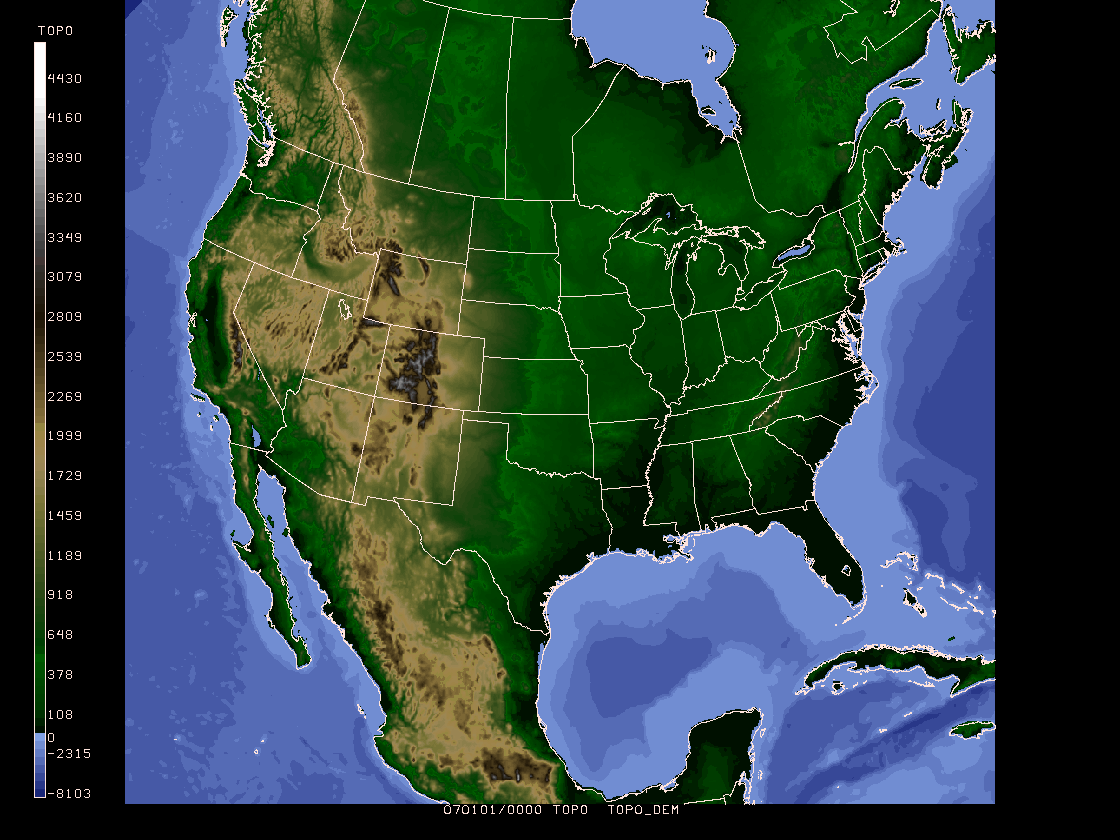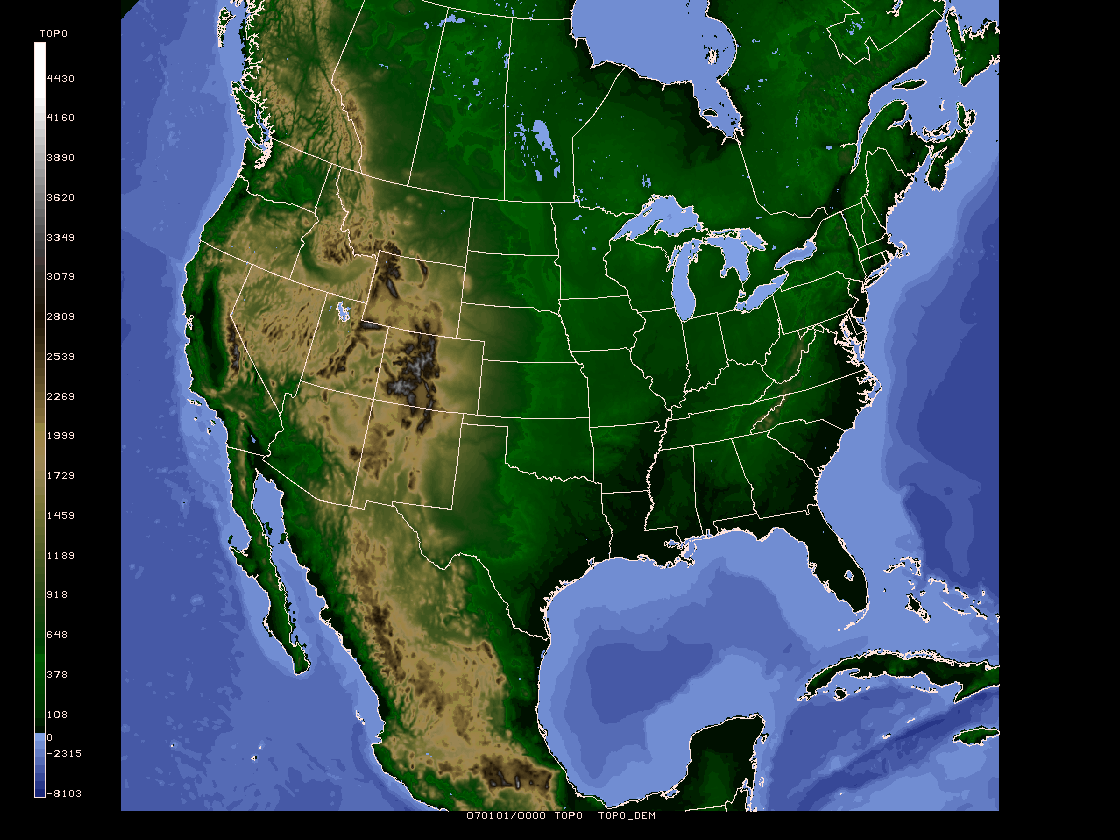GDFILE = nam_basemap.gem
GAREA = 10;-140;65;-40
GDATTIM = 070101/0000
GVCORD = none
GFUNC = topo
TOPOFL = dem5
IJSKIP = 0
GEMPAK-GDTOPO>r
GDTOPO PARAMETERS:
Grid file: nam_basemap.gem
Topography file: /home/gempak/GEMPAK5.10.2/gempak/tables/unidata/world_topo.5min
GAREA: 10;-140;65;-40
Lower left corner: 10.0000 -140.0000
Upper right corner: 65.0000 -40.0000
Number of X/Y grid points: 1200 660
Number of Grid points: 792000
Minimum and Maximum values -8103.00 4700.00
- Use a 2 part calibration range for band 3. Use pixel values 0 to 7 for negative values (-8103 to 0 meters), and pixel values 8 to 95 to represent positive values (0 to 4700 meters). The region selected represents a 6 Km resolution product.
GDATTIM = last GDFILE = nam_basemap.gem GLEVEL = 0 GVCORD = none GFUNC = topo SCALE = 0 PROJ = str/90;-97;0 GRDAREA = 15;-116;50;-51.95 KXKY = 1002;925 CPYFIL = SATFIL = nam_basemap.gini CALINFO = 99/3/TOPO,0,7,-8103,0;8,95,0,4700 WMOHDR = TICZ99/CHIZ/ GEMPAK-GD2IMG>r
TOPO TOPO_DEM5 0 94 11 4 1 upc_dem5.tbl
MAP = 1
GAREA = dset
PROJ = sat
SATFIL = nam_basemap.gini
LUTFIL = upc_dem5.tbl

